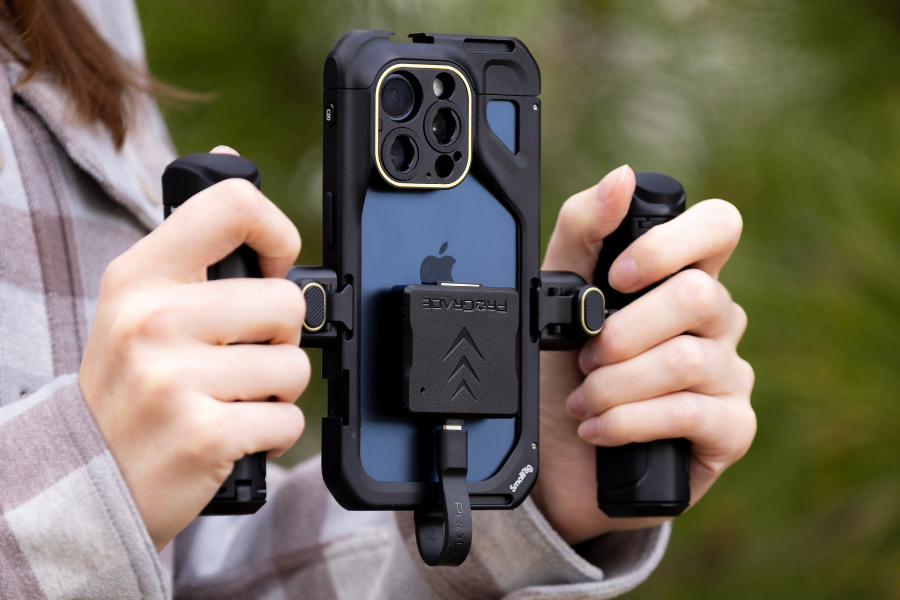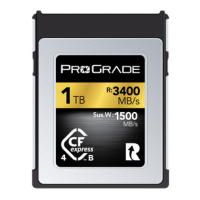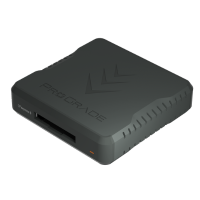The future of filmmaking isn’t coming — it’s already in your pocket.
In recent years, iPhone filmmaking has made a bold leap from experimental novelty to a serious production tool. The iPhone 15, with its advanced camera system and ProRes recording capabilities, is being adopted not only by indie creators but also by established organizations.
This shift reflects more than just technological advancement; it marks a broader transformation in how visual storytelling is captured and shared. Mobile cinematography is reshaping workflows, budgets, and what’s possible for creators on the move. But here’s the catch: to fully tap into the iPhone’s cinematic potential, especially when shooting in high-bitrate formats like 4K ProRes at 60fps or 120fps — one essential piece of gear is non-negotiable: reliable external storage.
If you’re a filmmaker, content creator, or mobile storyteller, this guide will show you how to harness the full cinematic power of the iPhone 15 or 16, and why more professionals are making the switch to mobile-first production.
Why Are Professionals Replacing Traditional Cameras with iPhones?
iPhones aren’t just catching up to professional cameras, in some cases, they’re replacing them. Creators across journalism, documentary, and travel content are choosing the iPhone not as a backup but as their primary production tool. It’s fast, lightweight, and always connected. Everything a mobile storyteller needs when moving quickly between locations or filing on a deadline.
This shift isn’t limited to indie creators and the decision to go mobile first isn’t about cutting corners. It’s about speed, agility, and getting high-quality footage without the baggage.
With features like 4K ProRes recording, cinematic mode, and smart HDR, the iPhone 15 and 16 deliver footage that holds up in professional editing environments. What was once a creative compromise is now a strategic advantage.
ProRes Explained: What Makes iPhone 15 and iPhone 16 a Game-Changer for iPhone Filmmakers?
ProRes is a professional video codec long favored by filmmakers and editors for its balance of image quality and efficiency. Unlike more compressed formats, ProRes retains significantly more data, giving editors greater flexibility in post, especially when it comes to color grading, visual effects, and multi-layer timelines. It’s been a staple in high-end production for years.
With the iPhone 15 and 16, Apple has brought 4K ProRes at 60fps and 120fps recording directly to mobile, without needing a separate camera rig. That’s a massive leap for creators who want studio-quality footage in a travel-ready setup. For mobile journalists, indie directors, or anyone capturing on location, it means being able to shoot footage that holds up in a professional editing environment without compromise.
ProRes on an iPhone bridges the gap between mobility and quality. But to truly unlock it, there’s one critical catch: it can’t be recorded to internal storage alone.
Why iPhone’s Internal Storage Isn’t Enough to Record ProRes Video?
You can record ProRes video directly to the iPhone’s internal storage, but only within strict technical limits. On the iPhone 15 and 16 Pro, internal recording is supported at 4K resolution for 24, 25, 30, and 120 frames per second. Recording at higher frame rates, such as 4K 60fps (on iPhone 15 Pro) may require an external storage device. If you’re using a 128GB model, that drops even further to 1080p at 30fps. And even at those settings, iOS requires at least 10% of free storage available just to initiate a ProRes recording.
To unlock ProRes at 60fps or 120fps in 4K, external storage isn’t optional—it’s required. Apple restricts these higher-performance modes to external drives connected via USB-C, and not just any drive will do. The external storage must be formatted using exFAT and deliver sustained write speeds of at least 220MB/s for 4K60 and 440MB/s for 4K120. Without that performance threshold, the iPhone simply won’t initiate recording. Another great option that meets and exceeds these requirements is the ProGrade Digital Pro Mini SSD PG10.5, but depending on your rig setup, you could choose other drives as well. The PGM12, for example, offers a smaller footprint, which can be a nice advantage.
These limits aren’t just inconvenient, they directly impact how you work. You might have to stop mid-shoot to offload files, manage storage manually between takes, or—worse—compromise on resolution or frame rate just to stay within internal capacity. That’s not a great place to be if you’re working on a tight timeline or in a location where re-shooting isn’t possible.
This might sound like a limitation, but it’s actually a quality control mechanism. By requiring high-speed external storage, Apple ensures that ProRes video is captured reliably and without dropped frames. For creators working in demanding environments or delivering for clients, that kind of reliability is critical.
Capacity Considerations
Now consider the file sizes: a single minute of 4K ProRes can easily consume 6GB or more, depending on bitrate and color encoding. That means even high-capacity phones fill up quickly—especially if you’re capturing longer interviews, continuous b-roll, or multicam scenes. When the space runs out, so does your ability to shoot.
So, while internal recording is fine for short clips and quick setups, it simply isn’t built for high-end, continuous production. If you’re serious about using the iPhone for cinematic storytelling, journalism, or documentary work, external storage solutions are what allows the camera to perform at its best, and lets you work without compromise.
The External Storage Solution for Recording ProRes Video on iPhone
To turn your iPhone 15 or 16 from a phone to a professional camera, you need external storage that won’t just meet Apple’s minimum spec, it needs to keep up with your workflow. In short, you need external storage that’s fast, reliable, and built for professional workflows. And not all solutions make the cut.
That’s where the ProGrade PGM12 Mobile Reader comes in. The PGM12 gives you the freedom to shoot video on your iPhone directly to a CFexpress Type A memory card, just like you would on a dedicated cinema camera, making 4K ProRes at 60fps and even 120fps not just possible but dependable.

The PGM12 connects to your iPhone via USB 3.2 Gen 2 cable, offering up to 10Gb/s (1.25GB/s) transfer speeds. Paired with CFexpress Type A Iridium memory cards with sustained write speeds of up to 1450MB/s, the PGM12 provides more than enough headroom for Apple’s ProRes throughput requirements (220MB/s for 4K60, 440MB/s for 4K120). That means zero dropped frames, no unexpected interruptions, and smooth capture, even at the highest settings.
More importantly, with the PGM12, you’re not tied to fixed internal storage or forced to juggle workarounds. You choose the CFexpress Type A card capacity that fits your shoot. When one card is full, you simply swap in another.
Last but not least—its compact, mobile-friendly form factor is built for the realities of on-the-go production. A patented magnetic base keeps the unit securely attached to your iPhone or rig cage. And because it enables you to use a MagSafe™ charger in conjunction with the reader, you can continue powering your iPhone while shooting.
Building a Smarter iPhone Video Workflow
Shooting in ProRes is just one part of the equation, how you manage, move, and back up that footage matters just as much. A great mobile video setup isn’t just about camera quality; it’s about making the entire workflow faster, smoother, and stress-free.
Here are a few tips to help streamline your mobile production process:
1. Format your external card properly.
Before recording, format your CFexpress Type A card to exFAT. This file system offers the best compatibility across both Mac and Windows. You can do this using Disk Utility (Mac), Disk Management (Windows), or directly on your iPhone.
2. Offload regularly.
Even with bigger capacity cards, it’s smart to offload and back up footage on an external high-speed SSD at the end of each shoot for safekeeping and editing.
3. Don’t forget power!
Shooting ProRes drains your iPhone battery faster than standard video, and since external drives and chargers both use the same USB-C port, you can’t record to an external card and plug in a charger at the same time. The PGM12 sidesteps that limitation as it enables you to use a MagSafe™ charger during recording. So, during longer shoots, start fully charged, and keep a MagSafe-compatible power bank in your kit so you can stay powered up without interrupting your workflow.
4. Test your setup before the real shoot.
Make sure your iPhone recognizes the external card, the recording starts and stops cleanly, and that you’re hitting the desired resolution and frame rate. A 2-minute pre-check prevents costly mistakes on set.
A mobile setup is only as powerful as the workflow behind it. With the right prep, your iPhone rig becomes a fast, flexible production system you can count on—anywhere.
Final Words: iPhone Filmmaking for Professionals
You don’t need a truckload of gear to create professional video anymore, you just need the right setup. With an iPhone, ProRes, and smart external storage solution, you’re equipped to shoot, move, and deliver like a pro, wherever the story takes you. The tools are already in your hands. Now, it’s just about how far you want to go with them.





